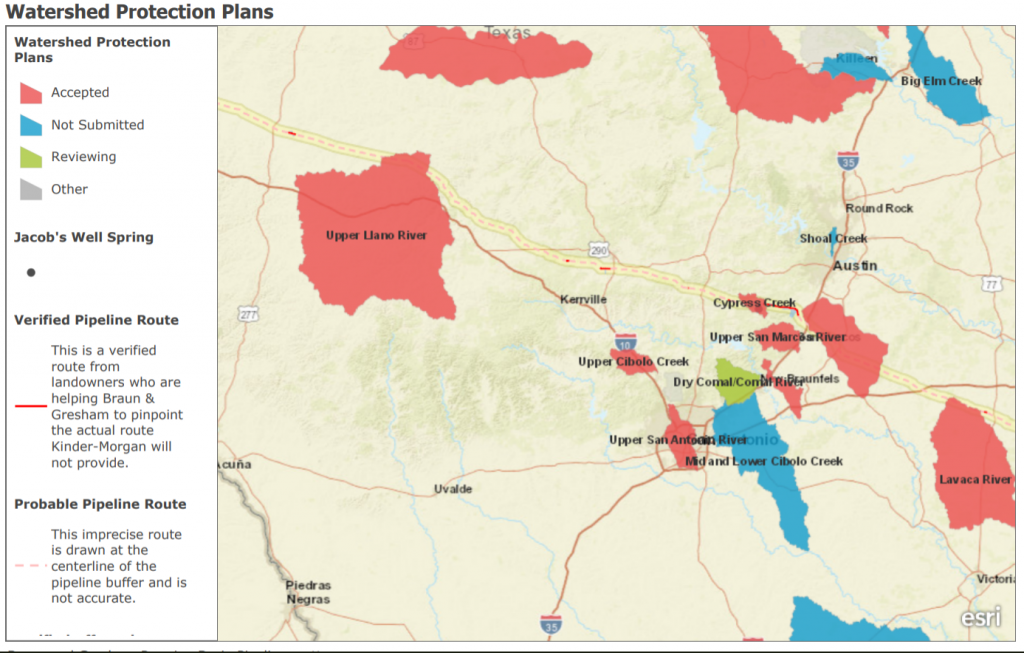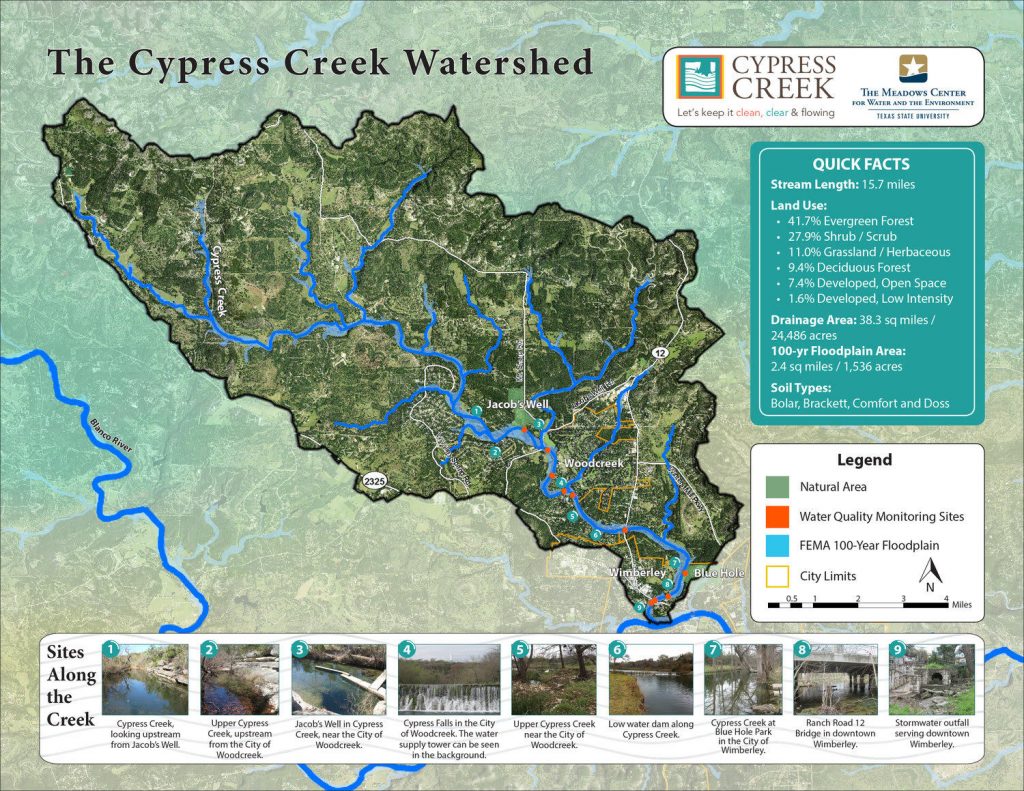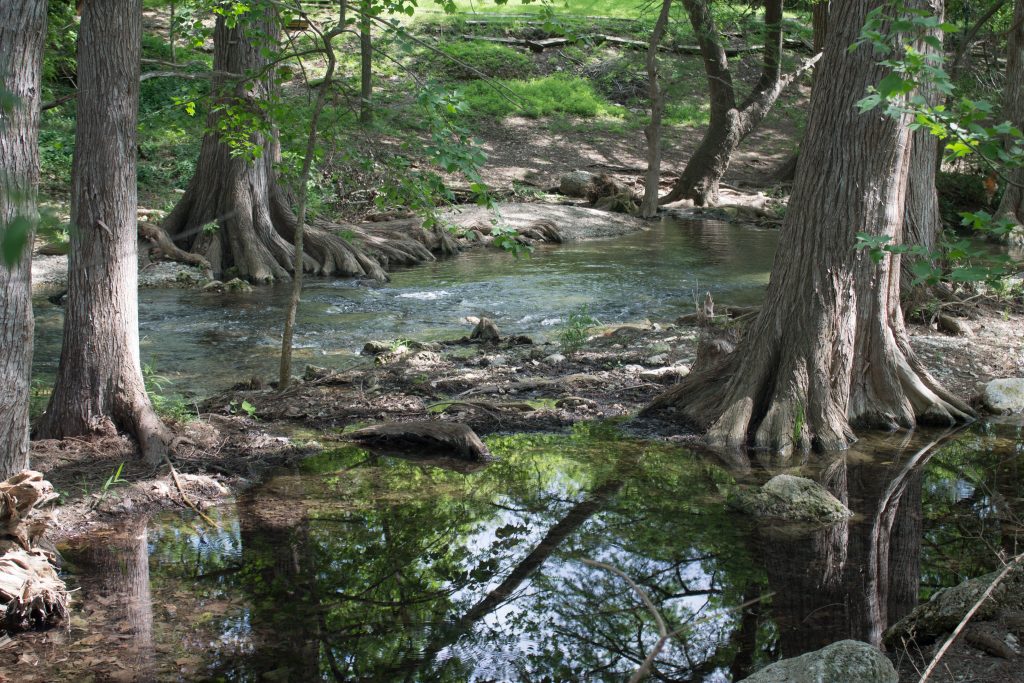
The Cypress Creek Watershed Protection Plan was the first EPA-approved watershed protection plan focused on preventative measures. Kinder Morgan’s proposed Permian Highway Pipeline project, (PHP project), directly intersects and undermines the Cypress Creek WPP. The route also directly affects the Upper Llano River WPP, the Plum Creek WPP, and the Lavaca River WPP.
The PHP project manages to avoid several federal regulatory and permitting processes because the planned route does not cross any state or international borders.
Permitting and regulation for intrastate pipelines fall under the jurisdiction of state agencies, which, in Texas, tend to be quite friendly to gas and oil industry interests. This is regrettable not just for residents of the Hill Country who depend on a competent representative government to keep them protected from industrial negligence, but for the Federal Government itself, who has been actively invested in the protection of area watersheds since 2008.

Over a decade ago, Wimberley Valley Watershed Association (WVWA), The Meadows Center for Water and the Environment and fifteen other organizations collaborated with concerned landowners to develop a preventative, community-driven Watershed Protection Plan (WPP) for the Cypress Creek Watershed.
The group was granted $3.1 million of Environmental Protection Agency (EPA) funding to implement and maintain the Cypress Creek WPP. The EPA has pledged an additional $368,000 through 2023, and another $1.2 million in local funding has been contributed to this WPP.
Certainly, the Federal Government would like to see that funding put to good use, but the proposed route of the PHP project directly undermines this goal.
These protection plans are a high priority because of their capacity to identify and prevent non-source point pollution (NPS pollution), which are pollutants that do not necessarily occur at the source of groundwater or surface water, but find their way to those sources through the ordinary functions of a watershed. NPS pollution is considered the most significant source of water quality impairment in the nation.

The Cypress Creek watershed is a unique bioregion in which the karst of the Lower Glen Rose layer of the Trinity aquifer is situated on the surface. Groundwater quickly finds its way through the karst and into the water table of the aquifer, which is itself very near the surface.
The PHP project guarantees NPS pollution implications due to the runoff and sediment generated during the construction process. Further, extremely dangerous and potentially irreparable NPS pollution would occur in the event of a pipeline failure. The region’s common floods and unique karst aquifers are obvious indications that building new fossil fuel infrastructure could endanger public and environmental health, but as of now, and in spite of its investment, the EPA has not required Kinder Morgan to do an environmental impact study.
In spite of Kinder Morgan’s assertion that this would be only a natural gas pipeline, there are reports that some landowner contracts still contain language allowing Kinder Morgan to convert the pipeline to crude oil and other hydrocarbons!
“Considering the historic investment in its protection and unique hydrogeologic makeup of the Cypress Creek watershed, particularly its connectivity to precious groundwater resources and iconic Hill Country springs, it is absolutely imperative that new development in this watershed be accompanied with appropriate environmental impact analyses,” said Nick Dornak, the Director of Watershed Services for the Meadows Center for Water and the Environment.
Further, the financial support of the Federal Government is not the only investment at stake. Over a decade of collaborative hard work by passionate and forward-thinking locals is also in jeopardy.
“The Wimberley Valley community and our partners in conservation have invested more than just dollars to protect Jacob’s Well and ensure a clean, clear and flowing Cypress Creek,” said Dornak. “It is the blood, sweat and tears shed over more than a decade of WPP development and implementation; the thousands of hours spent at Council meetings and in board rooms; and of course the sorrow and camaraderie of neighbor helping neighbor throughout the recovery and revegetation effort following a major flood event that shook the Valley in 2015; these are the investments that most deserve our gratitude and respect.”

WVWA and our partners demand that the Kinder Morgan pipeline not cross through the Cypress Creek watershed. WVWA’s requirement that this pipeline’s route is changed comes in order to protect our water and land from pollution and also to protect our substantial investments of time and money in the future livelihood of our region. Avoiding the critical protected watersheds of our state must be a fundamental prerequisite for the siting of this and any future fossil fuel pipeline.
WVWA will also find every avenue available to demand the state and federal government to subject Kinder Morgan to completion of an Environmental Impact Statement for the PHP project. We are certain that if they do, they will find overwhelming evidence of unacceptable negative environmental and economic impacts of this project’s current route to our unique region.
The enormous investments of time, money and hard work this community has put into our adopted watershed protection plans shall not be compromised. The stewardship of our region shall not be invalidated at the whims of Kinder Morgan.